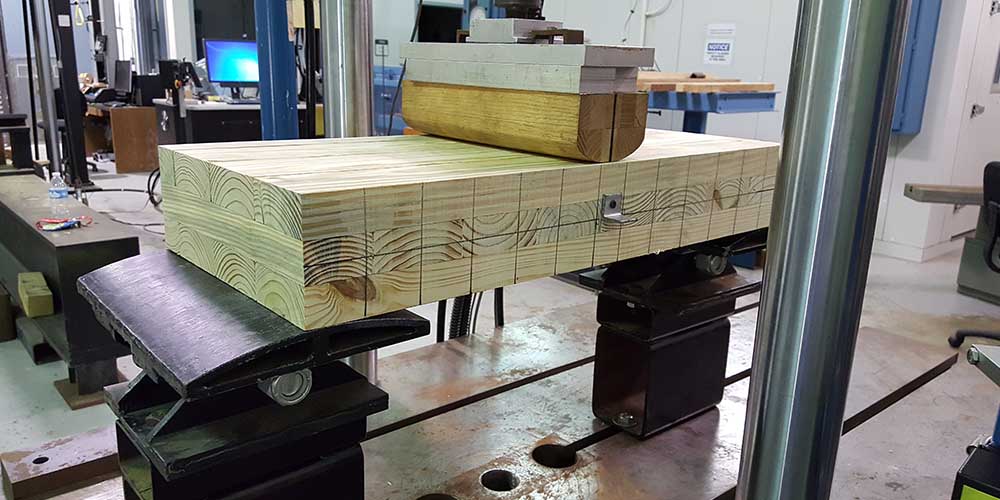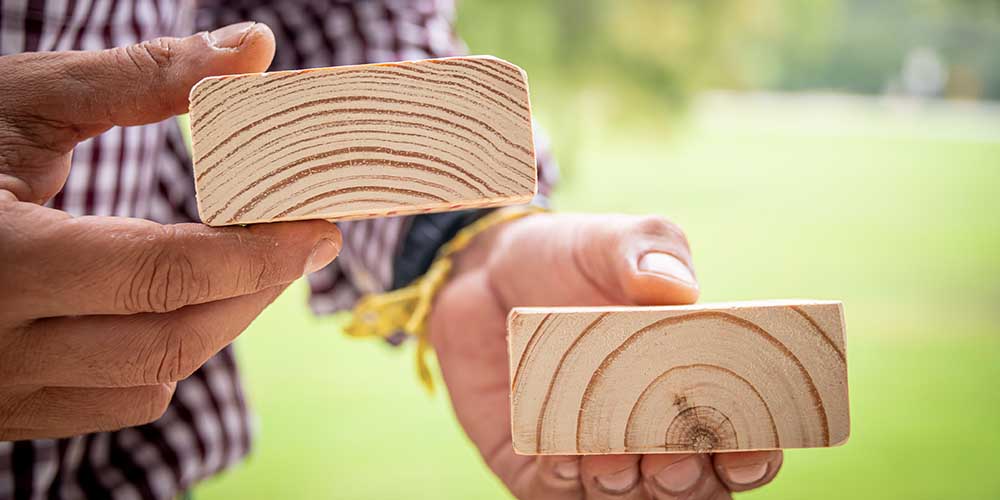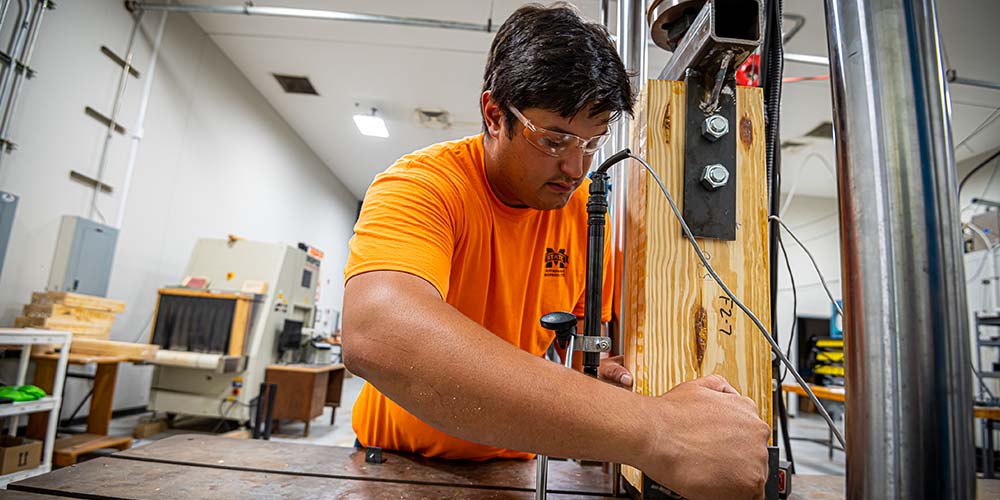Building Materials and Composites Stories

If the Lumber Fits
Cross-laminated timber (CLT) is a new building material with potential to improve home and building manufacturing. FWRC researchers are exploring new ways that CLT can be optimized for building in the humid, hot environment of the Southern United States. Dr. Rubin Shmulsky, sustainable bioproducts professor and head and FWRC researcher, said that CLT is being widely used in tall buildings, as it is fire-resistant and less costly than steel. However, in Mississippi, there is not a great need for tall residential buildings, so scientists explored other uses for CLT that could be used closer to home. The team is exploring CLT as a cost-effective material for building prefab homes, most of which are constructed with steel and evaluating the structural performance of CLT using local softwood and hardwood species to examine the feasibility of using these locally sourced materials for prefab housing.
The team hopes the research will eventually result in easy-to-assemble, affordable and durable housing made with local materials.
2017

How Tree Rings Impact Strength
According to the U.S. Department of Agriculture, 33.9 billion board feet of softwood lumber was produced in the U.S. in 2017, the latest year data is available. More than 50% of that is southern yellow pine, also known as southern pine. The strength and quality of southern pine lumber are essential to keep the nation's forest products industry thriving. That's why FWRC researchers seek to understand southern pine characteristics that impact strength and quality. Slow growing, older trees often have many rings closer together while younger, faster growing trees have fewer rings that are farther apart.
Dr. Frederico Franca, assistant professor in the Department of Sustainable Bioproducts, and Dr. Nathan Irby, former doctoral student, sought to evaluate whether growing characteristics such as how Rings per Inch (RPI) affect strength. The team evaluated the RPIs and specific gravity of 471 two-by-eight and 306 two-by-ten pieces of dimension lumber. They found an average of four or more rings per inch. Franca said that the big picture goal of the work is to maintain the value of southern yellow pine while finding the intersection between optimal economic productivity and mechanical properties. This research was funded by USDA Agricultural Research Service, Southern Pine Inspection Bureau, Timber Products Inspection, the USDA Forest Service Forest Products Lab, and the Forest and Wildlife Research Center.
Collaborators include Drs. Michael Barnes, Daniel Seale, Rubin Shmulsky, and Edward Entsminger.
2022

Sustainable Bioproducts Doctoral Student Passionate about Wood Science Research
Graduate student Lon Yeary has been interested in wood science since childhood, spending time with his father in the USDA Forest Products Lab in Madison, Wisconsin. After receiving his B.A. from the University of Wisconsin-Platteville in 2018, he took the advice of his advisor, Dr. Bob Ross, and is now pursuing a sustainable bioproducts doctorate and non-thesis civil engineering master's at Mississippi State. Yeary has conducted three projects for his degree programs. One was a study of a light frame wood truss roof collapse of a 50-year-old building, which was published in Wood and Fiber Science in 2021. Another project focused on developing a two-way support system for CLT building connections that resists both sheer and uplift.
The third project examined reinforcing steel fasteners in wood laminates to avoid stress-induced failure of the wood. Yeary's main goal as a graduate student was to improve wood structures while also educating people about the value of them.